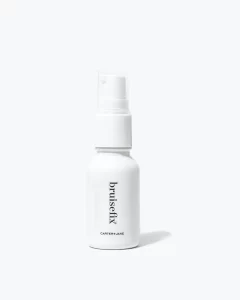Introduction
The Centers for Medicare & Medicaid (CMS) have taken action to improve access to affordable Medicare coverage through Medicare Savings Programs (MSPs). On September 21, 2023, CMS finalized updates to Medicaid regulations that will make it easier for individuals to enroll in MSPs and retain coverage. The new Streamlining Medicare Savings Program Eligibility Determination and Enrollment final rule (“final rule”) will require states to1:
- Automatically enroll certain Supplemental Security Income (SSI) recipients into the Qualified Medicare Beneficiary (QMB) program, the most comprehensive MSP.
- Maximize use of Medicare Part D low-income subsidy (LIS) program data to enroll people with LIS into MSPs.
- Align MSP and LIS definitions of “family size”.
- Reduce the burdensome documentation required for MSP applications.
- Simplify the process for verifying life insurance assets in the MSP application process.
- Ensures alignment of QMB and premium-free Part A effective dates.
CMS anticipates that over a half million people will become newly enrolled for MSPs as a result of these rule changes. This issue brief outlines each change in detail and their effective date, and flags opportunities where advocates can pursue additional state policies to increase enrollment and expand health care affordability for older adults and people with disabilities enrolled in Medicare.
What Are Medicare Savings Programs (MSPs)?
For 65 million older adults and people with disabilities, Medicare offers essential health coverage. Most Medicare enrollees have modest income – in 2022, one in three older Medicare enrollees had income below 200% of the federal poverty level (FPL). Indeed, two in five older low-income Medicare enrollees report difficulty in affording Medicare premiums, and many report avoiding care due to cost. 2
MSPs are Medicaid programs that help with Medicare costs. They serve as a bridge for low-income individuals who would otherwise face high premiums and out of pocket costs as barriers to accessing Medicare-covered services. Unfortunately, these programs are underutilized, with less than half of individuals eligible for an MSP enrolled.3
There are three main MSPs, all administered by state Medicaid agencies4:
- Qualified Medicare Beneficiary, or QMB, covers Part A premiums for individuals without free Part A; Part B premiums; and cost-sharing including co-payments, co-insurance, and deductibles.
- Specified Low-Income Medicare Beneficiary, or SLMB, covers Part B premiums.
- Qualified Individual, or QI, covers Part B premiums.
A chart showing financial qualification levels in every state in 2023 is available here5.
Automating QMB Enrollment for SSI Recipients
The term “full Medicaid” refers to what most people think of as Medicaid coverage – a package of health care services. If an individual is enrolled in “full Medicaid” states can also offer help with Medicare costs including payment of the Part B premium and Medicare cost sharing. Individuals can be enrolled in both full Medicaid and QMB. On top of full Medicaid, QMB helps with Medicare costs and federal protection against improper billing by health care providers.
People who are eligible for SSI are generally eligible for both full Medicaid and QMB. Yet, many SSI recipients are enrolled in full Medicaid but not QMB. SSI recipients particularly benefit from enrollment in QMB since many do not have enough qualifying work credits to be eligible for premium-free Medicare Part A, and QMB pays for the Part A premium.
This final rule offers a pathway for SSI recipients to be automatically enrolled in QMB when they enroll in full Medicaid. Starting October 1, 2024, 36 states and the District of Columbia will be required to automatically enroll SSI recipients in QMB.6 For the remaining 14 states7 (referred to as “group payer states”), automatic enrollment remains optional.8
Advocacy Opportunities
For advocates in the 14 group payer states, where automatic enrollment in QMB remains optional, advocates could encourage their state Medicaid agencies to implement automatic enrollment. Such advocacy would particularly benefit SSI recipients who reside in group payer states that are also 209(b) states – Illinois, Missouri, and Virginia – where enrollment in QMB is uniquely cumbersome.
Advocates in group payer states can also work with their state to follow the lead of the 37 other states and the District of Columbia and become a “Part A Buy-In” state rather than retain group payer status. This change would make it easier for both SSI recipients and other QMB eligible individuals to enroll in the program. Electing to become a Part A Buy-In state also is financially advantageous for states since Medicare, rather than Medicaid, becomes responsible for paying hospital and other costs.9
Note: Advocates have increasingly been reporting that Medicare providers are refusing to see QMB enrollees or individuals dually enrolled in Medicare and Medicaid. This may be a result of the “lesser of” policy under which states have the option to reimburse Medicare providers at an amount that is the lesser of the Medicare or Medicaid rate. The Medicaid rate is often less than the Medicare rate, so Medicare providers serving this population are not reimbursed fully or sometimes at all by Medicaid. Advocates can work with their states to eliminate the lesser of policy at the state level. Justice in Aging is also advocating at the federal level to address this issue. If you are seeing this issue, please contact info@justiceinaging.org.
Enforcing Requirement for States to Accept LIS Data as MSP Applications
The Social Security Administration sends data on who is enrolled in the Medicare Part D Low Income Subsidy (LIS or “Extra Help”) to state Medicaid agencies. For over a decade, federal law has required states to use that data to initiate an MSP application.10 Unfortunately, many states do not follow this requirement. The final rule reiterates federal law, requiring states to accept LIS leads data to initiate an MSP application by no later than April 1, 2026. The rule requires that states accept LIS leads data as verified without additional confirmation from the individual, and double-check LIS leads data that does not support MSP eligibility.
It is possible that the applicants included in LIS leads data are eligible for full Medicaid in addition to an MSP, which would provide more comprehensive health coverage. The rule requires states to (1) inform the applicant of their potential eligibility for full Medicaid benefits; (2) inform the applicant of the scope of full Medicaid benefits; and (3) provide the applicant with the opportunity to provide additional information in order to enroll in full Medicaid.11
Advocacy Opportunities
Though the effective date for this regulation is April 1, 2026, advocates can encourage their states to implement this change sooner – particularly since the requirement has been required by law for over a decade. CMS will offer technical assistance to states in the next few years to help states come into compliance with the law. Advocates can work with states to take advantage of this technical assistance as soon as possible.
Aligning MSP and LIS Family Size
A person’s eligibility for MSPs depends in part on their income level and on their family size. For example, in 2023 a family size of two people would be considered under the federal poverty level (and thus eligible for QMB) at $1,643 monthly, whereas a family size of four people would be considered under the federal poverty level at $2,500 monthly.
The final rule, effective April 1, 2026, establishes a federal standard for defining family size for the purpose of MSP eligibility that is aligned with the LIS definition of family size. It requires states to include in the definition of “family size,” at a minimum:
- The applicant;
- The applicant’s spouse (if the spouse is living with the applicant); and
- Other individuals living in the household if they are (1) related to the applicant (by blood, marriage, or adoption) and (2) dependent on the applicant and the applicant’s spouse for at least half of their financial support.12
In addition to new requirements governing family size, states must still follow long-standing requirements governing income counting. In short13:
- A state must include the individuals listed above as part of a person’s family size for the purposes of determining MSP eligibility.
- A state may include additional individuals in the person’s family size.
- A state must not deem the income other than the individual’s spouse or parents.
- A state may adopt more generous income rules, for example excluding a spouse’s income.
This final rule recognizes intergenerational families that might depend on the applicant for their support, and appropriately determines those applicants eligible for MSP under a more accurate and consistent definition of family size. The new federal rule will likely improve the rate of MSP applications processed using LIS leads data since the family size definition of these two programs will be aligned.
Advocacy Opportunities
Though the effective date for this regulation is April 1, 2026, advocates can encourage their states to implement this change sooner. Advocates should monitor how their state implements this change to make sure they are not improperly deeming income in MSP determinations from anyone other than the individual’s spouse or parents.
Advocates could also push for their state to adopt more generous income counting rules for MSP eligibility. For example, using 1902(r)(2) flexibility, states can exclude spousal income during MSP eligibility determinations.14
Reducing Documentation Required for MSP Applications
Documentation of financial eligibility is one of the main barriers individuals face in MSP enrollment. Under the final rule, CMS encourages states to align their MSP financial eligibility with LIS financial eligibility, which excludes forms of income and resources that some states count for MSP eligibility.
States that do not elect to align their MSP standards with LIS must accept less documentation from individuals applying for MSPs starting on April 1, 2026. Specifically, less documentation will be required for the following categories of income and assets:
- Amount of interest income;
- Amount of dividend income;
- Amount of non-liquid resources (such as property or cars); and
- Certain information about burial funds.15
At the time of application: Starting April 1, 2026, states must allow an applicant to attest to information about the four income and asset categories listed above. This means that, at the initial application, they cannot be required to submit additional documentation (for example, account statements or tax returns) for those categories. At this point, the state must accept the information from the application process on those categories without seeking further information, unless the state has information that is not reasonably compatible with the information provided by the applicant.16
Post enrollment verification: After a person has been determined eligible for an MSP and is enrolled, the state can (but does not have to) seek additional information to verify eligibility. Starting April 1, 2026, the state must provide at least 90 days for the individual to respond to any request for information.17
Advocacy Opportunities
As the final rule encourages, advocates can urge their state to adopt LIS standards for MSP eligibility. Advocates can also encourage their states to go further in aligning MSP and LIS eligibility using Section 1902(r)(2) of the Social Security Act, which allow states to use a less restrictive methodology for MSP eligibility.18 CMS noted in the final rule that states can use 1902(r)(2) to further align financial eligibility between MSP and LIS by disregarding in-kind support and maintenance, dividend income, interest income, the value of non-liquid resources, the value of life insurance, the value of burial funds, and whether burial funds are in a separate account.19
Simplifying the Process for Verifying Assets from Life Insurance
The final rule simplifies the process of verifying assets from life insurance for the purposes of MSP eligibility. First, some background on how life insurance is treated in Medicaid. There are two broad types of life insurance:
(1) Term life insurance, which typically lasts for a set number of years and does not have a vested dollar amount that a person can “cash out.” Term life insurance does not affect Medicaid eligibility because it is not considered an asset. States are not allowed to ask about the face value of term life insurance policies.20
(2) Whole life insurance, which includes a vested dollar amount that a person can “cash out.” Whole life insurance can affect Medicaid eligibility because it is considered an asset. According to existing federal rules for MSP eligibility, the cash surrender value (the amount that a person could cash out the policy for) of whole life insurance is countable when the face value (the amount to be paid out in the case of death) exceeds $1,500.21 States can adopt methodology that is more generous, e.g., disregarding the cash surrender value of life insurance policies.22
The final rule sets up the steps below to simplify the process of applying for an MSP with a whole life insurance policy effective April 1, 2026.
At the time of application (whole life insurance face value): The applicant attests to the face value of their whole life insurance policy. Under the final rule, at this point the state must accept this information during the application process without seeking further information, unless the state has information that is not reasonably compatible with the information provided by the applicant.
At the time of application (whole life insurance cash surrender value): If the applicant attests to a face value over $1,500, then a state could ask what the cash surrender value is. Under the final rule, the state may accept an attestation of cash surrender value. It can also seek additional information about the cash surrender value.
Post-enrollment: After determining that a person is eligible for MSP, the state can seek additional information to verify whole life insurance face value attested to at the time of application. Starting April 1, 2026, the state must provide at least 90 days for the individual to respond.23
Additional help with obtaining the cash surrender value: Finding a cash surrender value of a policy can be really difficult and presents a large barrier to coverage. If the state requires an individual to provide further information than an attestation of the cash surrender value, the final rule requires states to assist individuals with the task of obtaining the cash surrender value. The state must ask the individual for information about the policy and for authorization for the state to work directly with the life insurance company to obtain the needed information.
Advocacy Opportunities
In recognition of how much individuals struggle with Medicare costs, many states have taken steps to encourage access to MSPs by adopting more generous asset and income tests24:
- Eleven states plus the District of Columbia (AL, AZ, CT, DE, DC, LA, MS, NM, NY, OR, VT, WA) have eliminated their asset limits for MSP. Four additional states have increased their asset limits (CA, ME, MA, MN). In 2024, California will also eliminate their asset limit for MSP.
- Five states plus the District of Columbia (CT, DC, IN, ME, MA, NY) have gone beyond the federal minimum levels set for MSP income eligibility, and two states (IL, MS) have income disregards that are more than the federal minimum.
Although the final rule simplifies the process of verifying assets for MSP purposes, states could eliminate asset limits altogether for MSPs. Eliminating asset limits relieves both applicants and state Medicaid agencies of the administrative burden of counting and verifying assets.
Clarifying the QMB Enrollment Date in Group Payer States
As noted previously, enrollment in QMB for individuals who do not have premium-free Medicare Part A is particularly cumbersome in the 14 “group payer” states. Individuals in these states who do not enroll in Part A during their initial enrollment period must wait until the General Enrollment Period (January 1 – March 31) to “conditionally enroll” in Part A through the Social Security Administration and then enroll in QMB through their state Medicaid program.25 As of January 1, 2023, Part A entitlement (i.e., coverage) is now effective the first of the month following the month of enrollment (i.e., application).
The final rule, effective April 1, 2026, codifies and clarifies existing policy to align the QMB effective date with the new Part A effective date for people living in group payer states who enroll during the General Enrollment Period. For individuals who enroll in actual or conditional Part A during the General Enrollment Period, QMB will start the month that Part A entitlement (i.e., coverage) begins, if a state has determined that an individual is eligible for QMB the month Part A enrollment occurs (i.e., the month the Part A application is filed). If the state determines QMB eligibility starts the same month Part A entitlement (i.e., coverage) begins or after, QMB is effective the month after Part A entitlement (i.e., coverage) begins.
Examples:
- Jane lives in Kansas and applies for conditional Part A in January 2024. Kansas Medicaid agency determines that she is eligible for QMB in January 2024 as well. Jane’s Part A coverage will start February 1, 2024 and QMB will pay her premium.
- Lee lives in Virginia and also applies for conditional Part A in January 2024. Lee received income in January for some part time work they did over the holiday season. Virginia Medicaid determines that Lee is not eligible for QMB in January but is eligible in February. Therefore, QMB will not start until March 1, 2024. Medicare Part A coverage will also begin March 1, unless Lee pays the Part A premium on their own.
#Final #Rule #Streamline #Enrollment #Medicare #Savings #Programs









.JPG)


















